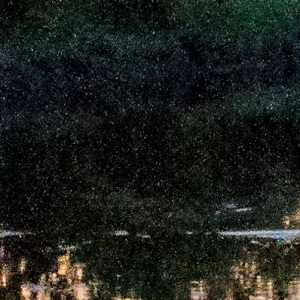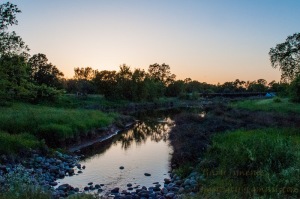Do you have a fear of raising your ISO?
To be fair I’ll answer the question first, not any more but I used to live in fear of higher ISO numbers and all of the impending doom that supposedly came along with them. It took a quite a bit of self encouragement but I finally broke through and let my camera’s sensor be as sensitive as it could be. Once I let my camera’s sensitivity shine new doors were opened and my photography triangle finally received its final point. I was comfortable with changing my aperture and my shutter speed it was just that darn ISO.My largest fear of ISO was the impending noise in my photograph that came along with it. Then I realized that the noise was just digital film grain, no different. When I started cranking my ISO up to levels I have never used before and I looked at the photographs on my computer screen I was convinced that I was doing the right thing. Looking at the photograph, the whole photograph I could see the grain, but not much, and if you like, you can remove some of that grain with imaging software like my personal favorite Lightroom. You also may like the look and feel that comes with the grain.
What causes the noise anyways?
Well, the quick answer to this is heat, yes heat is the evil source of grain in your photographs. Yes I know your camera is not hot or that you are wearing three or four layers to stay warm. The heat that matters is the heat that is generated on your cameras sensor. When you crank up your ISO, as stated previously, the sensitivity of your sensor increases.
Do some cameras maintain better noise quality at higher ISO levels?
Yes, and in this is where a full frame sensor really shines over its smaller crop sensor brethren. On a smaller sensor the pixels are crammed in to a tighter space and when the ISO is cranked up, that’s when the noise comes in. The smaller the sensor the more susceptible to noise the camera is, although technology is helping in this matter, at this point a larger sensor will inherently win out the noise battles.
But seriously who looks at a photograph like this?
The answer to this one is easy, photographers, specifically the one who created the photograph. And as photographers we see all of this noise and we make some noise of our own and curse the high ISO gods and second guess ourselves and ask what was I thinking when I cranked my ISO up to 2500? This is what I said the first time I used higher ISO and then I swore it off, until I realized that more than likely I’m the only person who is going to look at the photograph like this and that everyone else will look at it in its normal ratio.
Yes this is how people will see the photograph, unless that person happens to be another photographer then sure they will zoom in and pixel peek and say man look at all that noise, but I have the photograph. This photograph is an extreme case of noise for a simple reason, when I composed this photo I decided that I wanted to expose for the sky, so naturally the foreground would be extremely under exposed. In Lightroom I used a gradient tool and increased the exposure for the foreground and voila the photograph you see before you was created.
I can’t afford a full frame camera so how do I avoid the noise?
Yes, full frame cameras are expensive, new and used, but that doesn’t mean that you can not create stunning photographs with a crop sensor camera. The key is to get to know your camera and when and how you can push it. Many photographers will tell you, and I agree that better lenses will help you achieve greater results. Can’t afford a new lens either, if you have photographer friends with some good lens, aka good glass, ask them if you can borrow it. You can also rent lenses from a company like Borrowlenses. One thing you have to remember is that a photograph with some noise in it is definitely better than no photograph at all. There are ways to avoid high noise levels, if the scenario fits then yes use them, but if not get the photograph that you want by any means necessary(no law breaking). If you are taking landscape photography, bring a tripod set a low ISO, close down your aperture, and set your shutter speed to get the proper exposure that you want and then click the shutter, preferably with a cable release or wireless shutter remote. If you don’t have one or if it’s not an option use the timer, and this will help avoid camera motion. If your subject is moving and a tripod just is not appropriate, then adjust. Open up your aperture, increase your ISO and increase your shutter speed to capture the moment. It’s a balancing act that can only be improved with practice.











